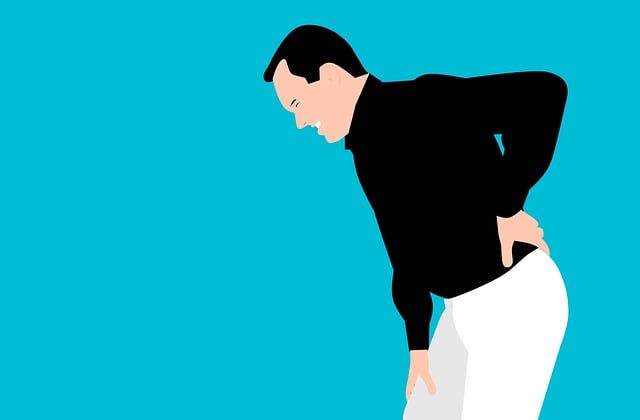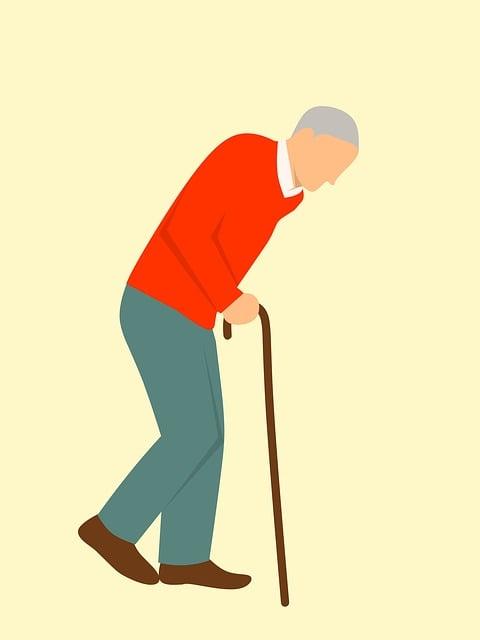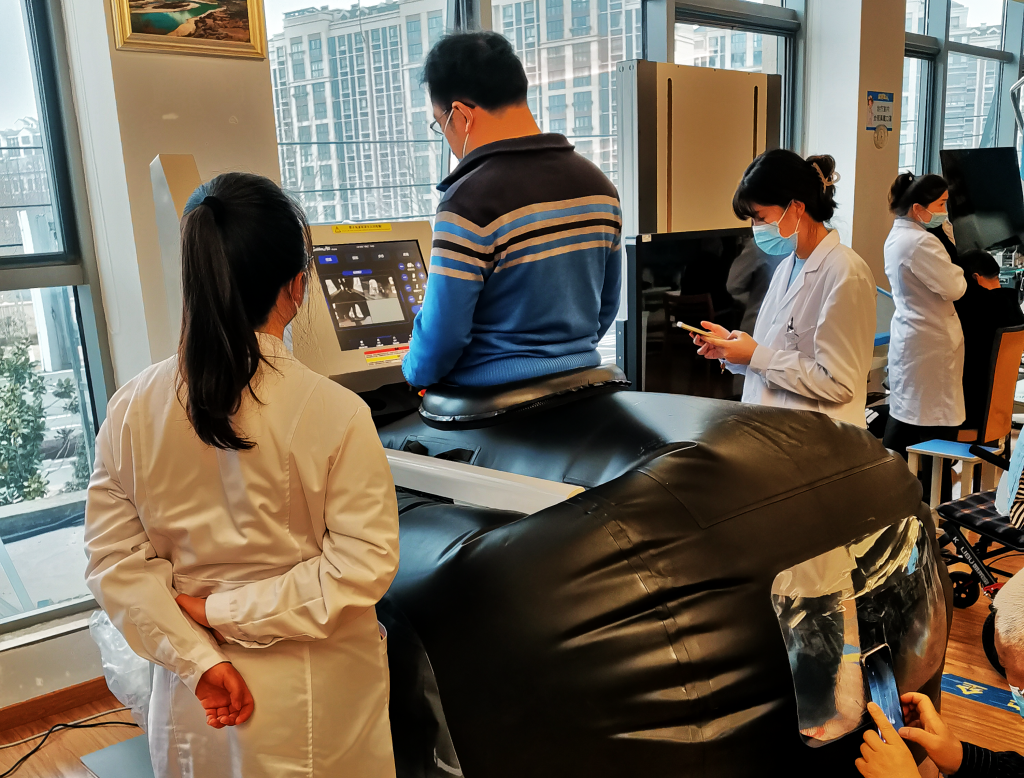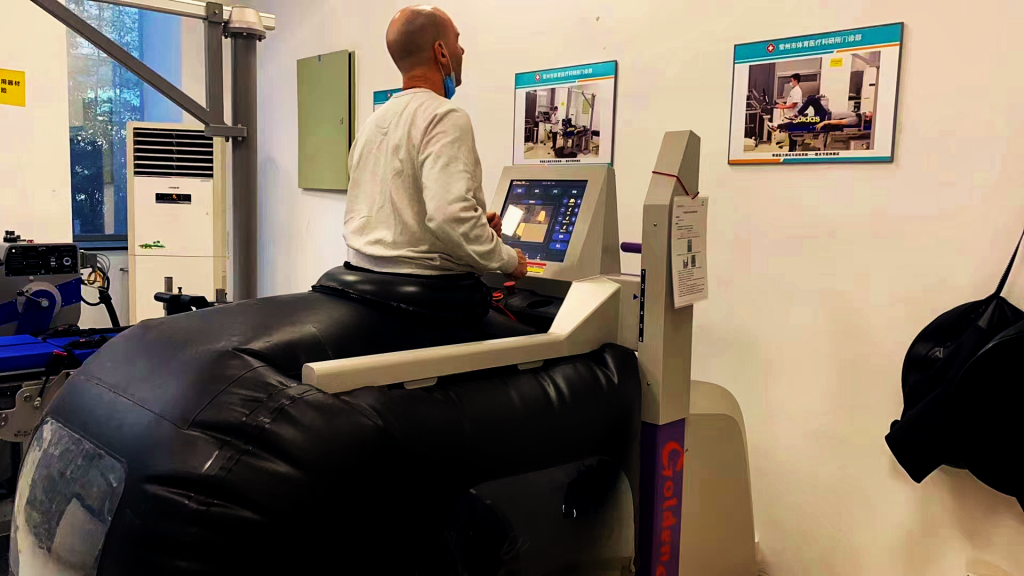Key words: Low back pain, Non-specific lumbago, Waist and back core training, Anti-gravity treadmill, Backward walking
Article cited in:屠金康,李方方,吴晓琼,等. 反重力跑台系统的倒走训练结合常规腰背核心训练治疗非特异性腰痛的效果研究[J]. 中国全科医学, 2023, 26(33): 4203-4206. DOI: 10.12114/j.issn.1007-9572.2023.0189.
TU Jinkang,LI Fangfang,WU Xiaoqiong, et al. Effectiveness of Backward Walking Based on Anti-gravity Treadmill Training System Combined with Conventional Low Back Core Training on Patients with Non-specific Low Back Pain[J]. Chinese General Practice, 2023, 26(33): 4203-4206. DOI: 10.12114/j.issn.1007-9572.2023.0189.
Article link:反重力跑台系统的倒走训练结合常规腰背核心训练治疗非特异性腰痛的效果研究 (chinagp.net)
Abstract:
In recent years, the incidence of non-specific low back pain has been increasing. The duration of conventional treatment is short, and the symptoms tend to rebound, which has a great impact on the body and mind of patients.
To investigate the effectiveness of backward walking based on anti-gravity treadmill training system combined with conventional low back core training on patients with non-specific low back pain.
A total of 40 patients with non-specific low back pain admitted to the Rehabilitation Department of Zhongshan Hospital, Fudan University from July to December 2022 were divided into the experimental group (20 cases) and control group (20 cases) according to the random number table method. The control group received conventional low back core training, and the experimental group received backward walking based on anti-gravity treadmill training system on the basis of the control group. The Oswestry Disability Index (ODI), Visual Analogue Scale (VAS) and Back Pain Classification Scale (BPS) of the 2 groups were evaluated before and 4 weeks after treatment, respectively.
There was no significant difference in ODI, VAS and BPS scores between the two groups before treatment (P>0.05) ; after 4 weeks of treatment, ODI, VAS and BPS scores of the 2 groups were decreased, and ODI, VAS and BPS scores of the experimental group were significantly lower than those of the control group (P<0.05) ; the difference in the change of each score before and after treatment between the two groups was statistically significant (P<0.05) .
The backward walking based on anti-gravity treadmill training system is effective in improving the pain level and overall status of the low back in patients with non-specific low back pain, which is worthy of clinical promotion.

Nonspecific low back pain (NLBP) refers to a disease that excludes known diseases or pathological changes and causes persistent pain and weakness in the lumbosacral region, with or without radiating pain in the lower limbs, and limited activity. Epidemiological studies show that 50% to 80% of adults will experience low back pain in their lifetime, and NLBP accounts for approximately 90%, causing serious impact on patients’ functional activities, physical and mental health, and quality of life. The disease lasts for a long time and is prone to recurring or progressive exacerbations, making it a difficult problem for rehabilitation treatment. Currently, common treatment methods include preventive treatment, acupuncture and massage, exercise therapy, physical factors and minimally invasive treatments. Most patients’ symptoms improve after treatment, but core functions such as waist and abdominal muscle strength, endurance, and proprioception have not yet recovered. The recurrence rate within 1 year is as high as 70%.
NLBP mainly manifests as pain and discomfort in the area above the gluteal crease, below the costal margin, and between the bilateral midaxillary lines. Although there are currently various treatment methods, there is a lack of high-quality research evidence to prove which method is more effective, which brings great challenges to clinical treatment. A certain level of distress. There is evidence to support that low back pain will reflexively inhibit the function of the deep core muscle groups, thereby losing the protection of the lumbar spine. Over time, disuse atrophy of the core muscle groups will occur, manifesting as low back pain, weakness, and poor coordination. Then lumbar spine instability occurs. The main function of core stability training is to enhance the movement control ability of the core muscles near the spine under low-load isometric contraction. In this process, the coordination and balance capabilities of the core muscles are activated or strengthened, and the stability of the lumbar spine is enhanced. , thereby relieving the symptoms of low back pain. Research by WASEEM et al. has proven that core stability training is more effective than conventional rehabilitation training in improving lumbar spine stability, core muscle movement control and relieving low back pain. Multiple experiments have proven that core stability training can not only promote proprioceptive input and activation Deep muscle groups, and can strengthen the active subsystem and nerve control subsystem that maintain the stability of the lumbar spine, and can reduce the secretion of inflammatory factors, thereby reducing pain.

Back walking is widely used among athletes as a core strengthening training method to prevent low back pain. Studies have proven that it can effectively improve aerobic endurance, spinal stability and movement control. Backward walking is not a simple process of contraction of the lower back muscles. Compared with forward walking, it increases the utilization of energy and can promote the activation of the motor cortex and skeletal muscles. It also improves the recruitment ability of motor units while participating in neural regulation. , the stimulation intensity to the lower back is greater. Studies such as KIM have shown that backward walking training can strengthen the strength of lumbosacral muscles and ligaments, reduce lumbar spine tension, and increase lumbar spine stability. Studies such as DUFEK have proven that backward walking training can effectively reduce lumbosacral pain and increase lumbar spine mobility, thereby improving patients’ quality of life.


The anti-gravity treadmill system is composed of a pneumatic system and a treadmill system. It is a type of weight loss support walking training. It can reduce metabolic demand and skeletal muscle load during use. In recent years, it has been favored by rehabilitation therapists due to its significant auxiliary effects in the fields of stroke, spinal cord injury, hip, knee and ankle joint injuries. This study innovatively applied the reverse walking training mode of the anti-gravity treadmill system to patients with NLBP and achieved significant results. Compared with simple backward walking training, reverse walking training on an anti-gravity treadmill has the following advantages: the backward walking speed and time can be set according to the patient’s physical condition, which is easy to quantify; the patient can receive visual feedback from the front screen during the backward walking process. Help them correct their bad gait, thereby correcting the movement pattern of the waist and back muscles; the gravity-reducing environment of the air bag can effectively reduce the tension of the lumbosacral muscles and reduce pain and discomfort during walking; the air bag wraps around the patient’s waist to prevent falls. It makes patients safer during walking backwards, especially for elderly patients, which can help them overcome their fear and increase their sense of security.
Conclusion
The backward walking based on anti-gravity treadmill training system is effective in improving the pain level and overall status of the low back in patients with non-specific low back pain, which is worthy of clinical promotion.